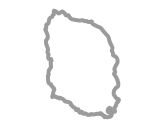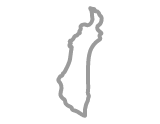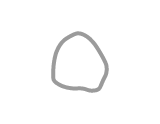Relaxing Japanese-style; hop into an Onsen
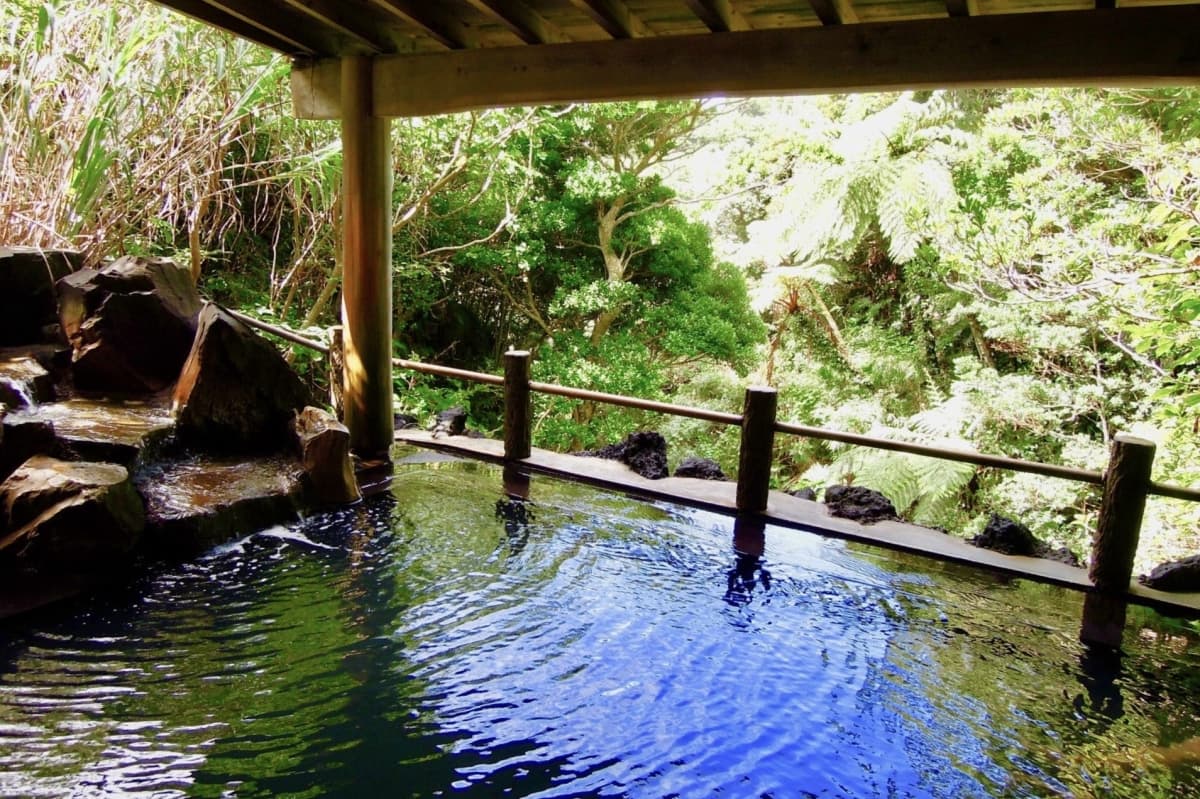
Humans need nature. We have learned to use and often improve what nature provides. People in countries in volcanic areas for example have been using natural hot springs for cleaning, heating and relaxing for ages. Thermal springs in northern European countries like Iceland and Hungary are well known and Japan has its own distinct hot spring traditions, perhaps even more woven into the daily lives of the people than elsewhere. Or at least so it used to be, before modernity kicked the Japanese into a higher gear; the gear of work, work and work.
Japan itself is the result if volcanic activity and movement of tectonic plates. Earthquakes and eruptions have been shaping the Japanese landscape since the beginning of times because of its location on 'the Pacific Ring of Fire,' where several plates continuously rub against each other, causing quakes and volcanic eruptions. Go here to learn more. Next to over 1,500 earthquakes per year there are more rewarding side effects, hot springs. 'Lava flows underneath us heat up ground water which bubbles up through the crust filled with soothing minerals, ready to for us humans to enjoy!' This natural style is what is called Onsen in Japan.
End of the geology lesson, time to focus on people again, and what we can learn. Because using a Japanese bath is relaxing, but only if all users play by the rules. Onsen-etiquette this is called, and it is very important. Look as this sketch:
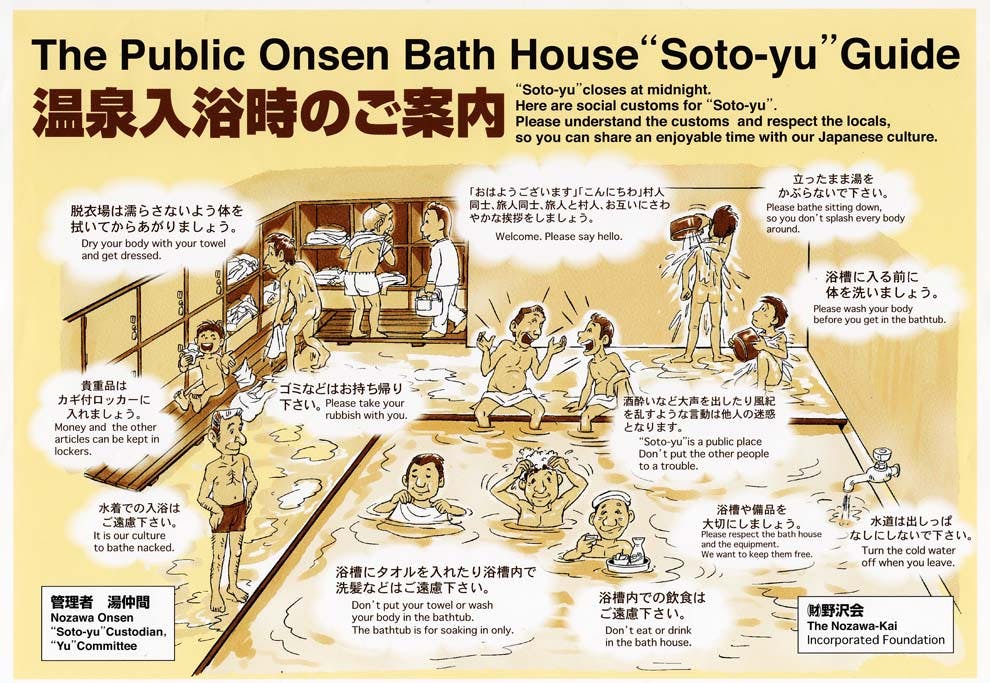


It shows you some details of the ritual. The most import are:
1. Onsen are near-always 'nude experience', no bathing suits allowed. They are also near-always separated by gender; male-only and female-only.
2. Leave all you have behind in the dressing room, worries included. There are baskets for your stuff. Lockers for valuables are often found outside. Just bring a small cloth if you have one, to scrub yourself with, and soap if you wish. Soap is often provided. Shaving kits can be brought too. People often like to sort of cover their crutch with the small cloth while walking around, but you do not have to.
3. Once inside you will see many small stools along the walls around the bath. Each has a mirror for shaving, a hand-held shower and a small bucket to splash yourself with. And of course a hot- and cold water tab.
4. Choose a spot and sit down. Always wash thoroughly first! This is the most important since the bath is shared by all. Use plenty of soap and water, don't miss a spot. Use your cloth to rub yourself with. You can splash around with the bucket and some like to take some onsen water and dump it over their heads to begin with. Just sit away from the bath if you do that.
5. After loosing all soap, leave your spot clean for the next person. Rinse the area and stool with the shower and put it all nicely together again. Don't forget to clean your cloth well.
6. Now the fun begins; go into the water! but mind it can be very hot. Often there are 2 or more pools, inside and outside. Try to start with the least hot one, usually outside. Inch yourself slowly into the water, better for your body and your neighbours. Don't play around, just sit, soak and relax. Your small cloth can be use to dip into the water and place on your head, it should not be in the water long though.
7. Better not sit too long, take brakes to cool down and to move from bath to bath. Afterwards, cool down outside the water or with cold water from the washing spots. And drink lots of cold water to refill what you sweat out.
8. In the dressing room you will usually find combs, hairdryers, cremes and moisturisers and other items to prepare you well for the world outside.
Sounds great, right? So where can we enjoy these onsen? Actually everywhere in Japan there are such public baths, the tradition dating back to when people did not yet have nice private bathrooms at home. Of course times are different now but the onsen keep going strong. Note that onsen use natural water heated by nature. There are also many 'sento' which are also bathing facilities that usually have the same set-up but these have water heated by humans, so generally normal water is used and healing powers cannot be claimed. Logically, onsen are found in areas with high volcanic activity like the mountain regions. Tokyo has mostly sento and to get great real onsen 'in' Tokyo, head for the Tokyo Islands, an amazing rural area just under 2 hours away by boat.
Enjoyed that?! Now you are well on your way to become a real Japanese!
Read more details on this dedicated onsen-site.
